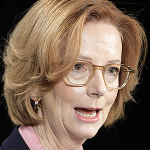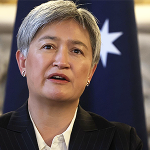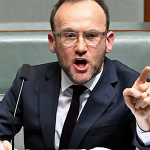In August 1914 Australia went to war. By the end of 1914, the German Schlieffen Plan had failed and for the next four years, aside from two failed offensives, the German army never reached further than the Marne River before retreating to a 764-kilometre-long trench line in the north of France where for the best part of the war it remained. Even before the failure of the Schlieffen Plan, the likelihood of Germany or any of her allies invading Australia was slim. But Australia has never waited for the war to come to it, Australia has always gone to the war.
The second world war comes close to being the exception that proves the rule when, in February 1942, Prime Minister John Curtin brought home the 7th Division rather than following the British Prime Minister, Winston Churchill’s, directives to allow the 7th Division to be diverted to Burma. The 7th Division was later sent to successfully resist the Japanese at Milne Bay and on the Kokoda Trail.
Japan had begun its territorial expansion with its invasion of Manchuria in September 1931 and by mid-1942 had taken over a vast area of Southeast Asia (excluding Thailand) and reached the Australian-mandated territory of New Guinea. Triggered by an oil embargo imposed by a United States to condemn Japan’s aggressive foreign policy, the Japanese navy infamously attacked Pearl Harbour on December 7, 1941. This resulted in both the United States and Britain declaring war on Japan. In its first declaration of war, it had ever made independently of Britain, Australia also declared war on Japan.
The Japanese advance continued after Pearl Harbour. Australia recognising the threat, and uncertain of Britain’s capabilities to help us, looked to the United States for assistance and in December 1941 the Australian Prime Minister John Curtin in his article entitled The Task Ahead told the Australian people that:
‘Without any inhibitions of any kind, I make it quite clear that Australia looks to America, free of any pangs as to our traditional links or kinship with the United Kingdom.’
Rather than Britain’s inability to help us serving as a wake-up call that reliance on strong allies on the other side of the world may be a mistake, Curtin’s ‘looking to America’ continued our pattern. For various reasons, not least to support the United States in the post-world war two Cold War, we continued to go to war rather than waiting for the war to come to us. More than any other country it was Australia that could always be found fighting on America’s side.
But all of sudden the world is a different place.
It might be something of a relief but possibly we no longer have to go to war with America, because it seems unlikely America will be going to war in the conventional sense for some time. But our relief is short-lived as now there are new coalitions of the willing to join. Anthony Albanese has pledged that Australia continue to support Ukraine, having already committed $1.5 billion and is ‘open to any requests to contribute to a future peacekeeping effort in support of the just and lasting peace we all want for Ukraine’. Ironic ,considering it was Labor policy in the interim years between world wars that chose not to endorse the Singapore strategy of supporting the construction of a large British naval base in Singapore, and that Curtin in the 1940 election had campaigned on the idea that ‘primary responsibility of any Australian government was to ensure the security and integrity of its own soil and people before contributing to a common cause’.
In theory, joining the current Coalition of the Willing is a good idea. For Australia, strength lies in numbers and whilst Nato, as it exists in its present form, is unlikely to come to our aid should we need help, we are more likely to receive some kind of assistance if we help where we can. Australia should take the United States decreasing interest in European affairs as a warning and nor should it rely on the idea that United States concerns about China will mean we are too important to be let go. In Curtin’s The Task Ahead article he also said:
‘We know the problems that the United Kingdom faces. We know the constant threat of invasion. We know the dangers of dispersal of strength, but we know too, that Australia can go and Britain can still hold on…’
Somewhat different circumstances but we’ve been here before. However now if we needed to count on the United States and couldn’t, we are on our own.
It’s a brave politician who stands up and talks about increasing defence budgets at election time and when a great many Australians are being hit by still high interest rates and high prices but at the same time politicians who win elections are politicians who are ahead of events. Australia can do little to shape world events, but we can do better than just be reactive to them. We can continue our work on alliances; last week’s The Economist recommended in an example of creative thinking an ‘Asian Quad’ comprising of Japan, India, Australia, and Indonesia. Why not? And at the same time as thinking differently about alliances we need to make decisions about our defence that make us look proactive, not reactive. Counting on America to help build nuclear submarines may no longer be such a good idea.
Events in Europe are different to what could transpire in the Pacific but Australia has already been warned what to expect when it comes to our defence budget. Elbridge Colby, Trump’s nominee as under-Secretary of Defence for Policy says the ‘main concern the United States should press with Australia … [is that] … Australia is currently well below the 3 per cent level advocated for Nato … and Canberra faces a far more powerful challenge in China’.
In the next election we should have a choice between two leaders who recognise now is the time to lead on foreign policy. So far there is no indication from either prospective leaders that they either see the need or are ready for such a task. Hoping the problem will go away is not an option.









